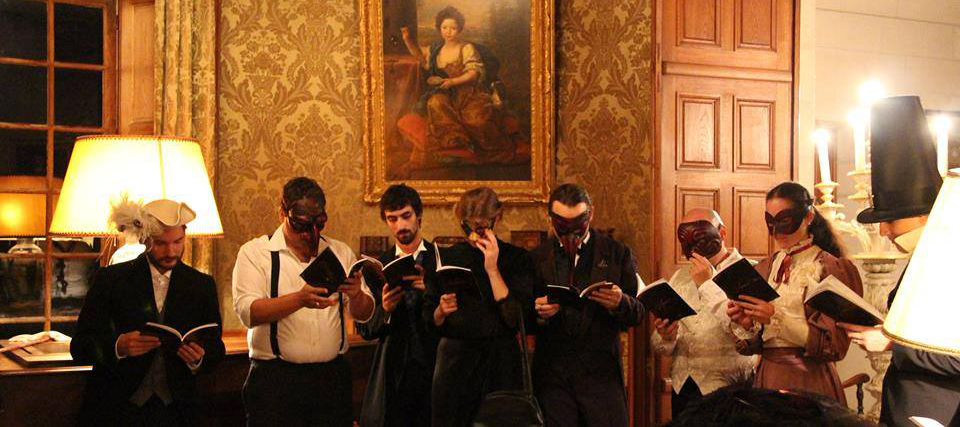Tag: France
-

Creating Aura
in
To give in to their alibi, the participant must be credible in their role. Building an aura is a conscious and explicit process that supports this.
-

It Wasn’t Me
in
“It’s not me, it’s my character.” Definitions of alibi, the ways in which it is emancipating, and the situations when alibi is not enough.
-

Character-based Design and Narrative Tools in the French Style Romanesque Larp
This text aims to present the romanesque style larp in relation to other similar larp styles in Europe & establish some tools that are use to create them.
-

NEXUS-6 – Narrativist Airsoft
Nordic larp is taking France by slow-motion storm. After experiencing the awesomeness, people are setting up re-runs of classics such as Mad about the Boy and Just a Little Lovin’. The next logical step was to make our own stuff, and NEXUS-6 was one of the first humble attempts.
-

Knutepunkt 2013 Recap by Tomas B., Part 4
French larper Thomas B. has written a recap of his experience at Knutepunkt 2013, here’s the fourth and final part: http://www.thomasbe.com/2013/05/02/knutepunkt-2013a-subjective-recappart-4-aka-the-end-finally/ You can read part one through three are here: http://www.thomasbe.com/2013/04/23/knutepunkt-2013a-subjective-recap-part-1/ http://www.thomasbe.com/2013/04/25/knutepunkt-2013-a-subjective-recap-part-2/ http://www.thomasbe.com/2013/04/29/knutepunkt-2013-a-subjective-recappart-3/ Read more about Knutepunkt in the Nordic Larp Wiki: http://nordiclarp.org/wiki/Knutepunkt Discuss and read more about Knutepunkt 2013 in the Nordic Larp Forum: http://nordiclarp.org/forum/viewforum.php?f=6
-

Knutepunkt 2013 Recap by Tomas B., Part 3
French larper Thomas B. has written a recap of his experience at Knutepunkt 2013, here’s the third part: http://www.thomasbe.com/2013/04/29/knutepunkt-2013-a-subjective-recappart-3/ You can read part one and two here: http://www.thomasbe.com/2013/04/23/knutepunkt-2013a-subjective-recap-part-1/ http://www.thomasbe.com/2013/04/25/knutepunkt-2013-a-subjective-recap-part-2/ Read more about Knutepunkt in the Nordic Larp Wiki: http://nordiclarp.org/wiki/Knutepunkt Discuss and read more about Knutepunkt 2013 in the Nordic Larp Forum: http://nordiclarp.org/forum/viewforum.php?f=6
-

Knutepunkt 2013 Recap by Tomas B., Part 2
French larper Thomas B. has written a recap of his experience at Knutepunkt 2013, here’s the second part: http://www.thomasbe.com/2013/04/25/knutepunkt-2013-a-subjective-recap-part-2/ You can read part one here: http://www.thomasbe.com/2013/04/23/knutepunkt-2013a-subjective-recap-part-1/ Discuss and read more about Knutepunkt 2013 in the Nordic Larp Forum: http://nordiclarp.org/forum/viewforum.php?f=6
-

Knutepunkt 2013 Recap by Tomas B.
French larper Thomas B. has written a recap of his experience at Knutepunkt 2013: http://www.thomasbe.com/2013/04/23/knutepunkt-2013a-subjective-recap-part-1/ Discuss and read more about Knutepunkt 2013 in the Nordic Larp Forum: http://nordiclarp.org/forum/viewforum.php?f=6